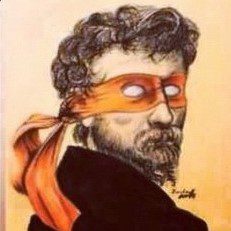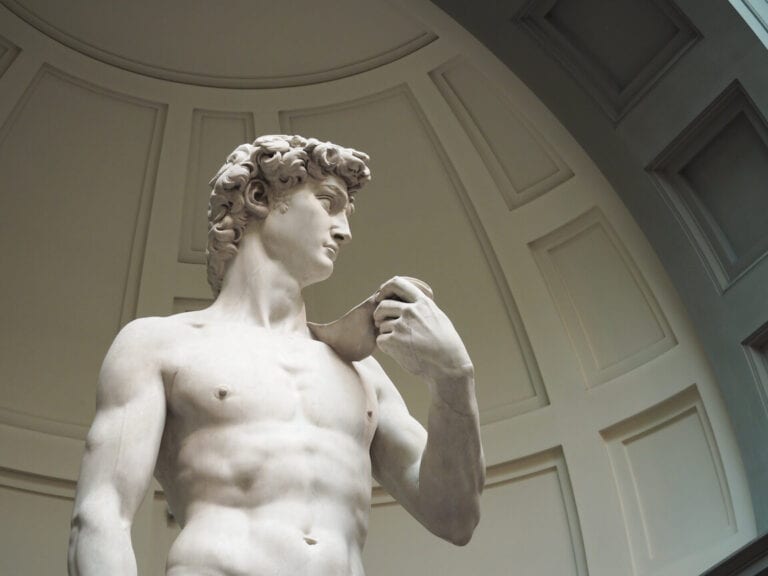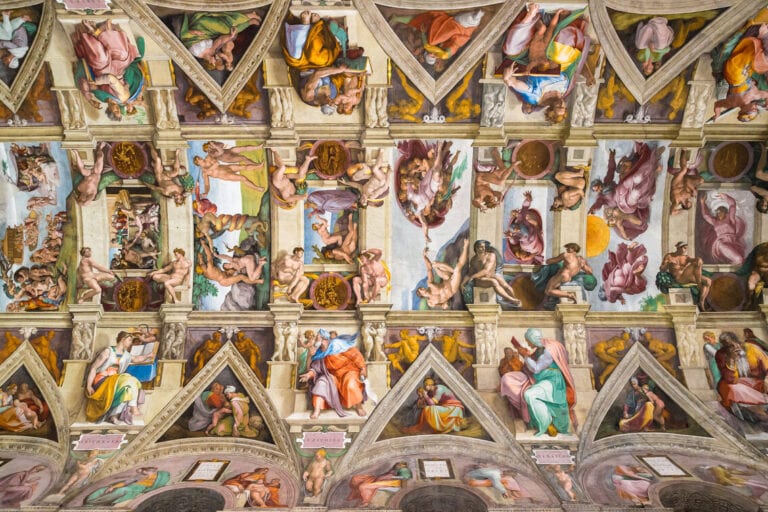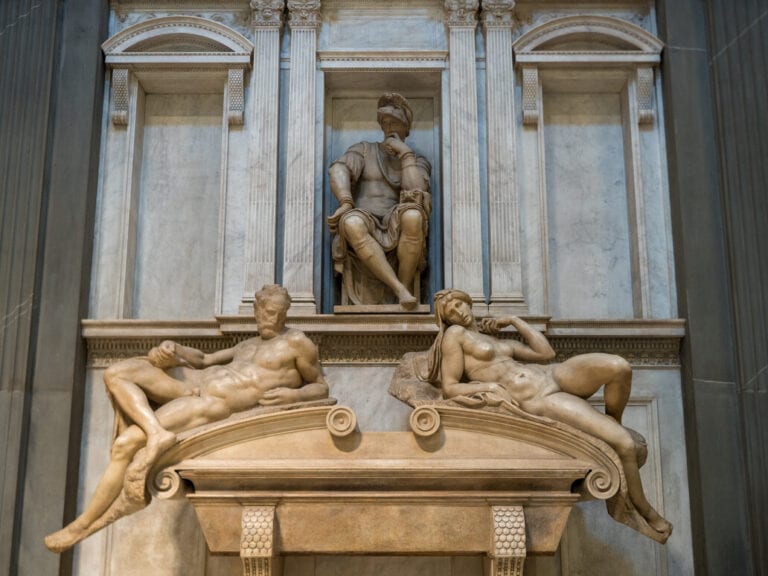Who Came First...The Turtle or the Artist? The Artists of Course!

Introducing Michelangelo Buonarroti
In the first of our four part series of blogs we will take a look at my favourite artist and Ninja Turtle; Michelangelo. Strangely enough the artist Michelangelo had very little in common with his fun (and pizza) loving, carefree namesake but instead was a very private and often grumpy man who’s beauty shone through only in his many, many works.
Michelangelo di Lodovico Buonarroti Simoni was born on March 6th 1475 in the Tuscan village of Caprese, which has now been renamed appropriately, Caprese Michelangelo. He was born into a comfortable life in a family of bankers, but his family soon moved to Florence. His life would be turned upside-down when his mother fell ill and died when he was only 6 years old. This meant the young Michelangelo had to move to a small town outside of Florence to live with a nanny whose husband was a stonemason at the local marble quarry, and it was there that Michelangelo discovered his love for working stone that would turn him into one of the most revered artists of all time.
Soon after Michelangelo was sent back to Florence to study grammar in the hope he would enter public office, but it soon became clear that he had no interest in his studies and instead spent his time copying paintings and hanging out with artists. His dad eventually got the message and in 1488, aged 13, Micheangelo was sent to apprentice the painter Domenico Ghirlandaio, a great master of the time. He soon made a name for himself and a year later, when the ruler of Florence Lorenzo de’ Medici asked for Ghirlandaio’s best students he sent Michelangelo.
Despite this, he soon gave up painting ,much preferring to sculpt than to paint. A mostly quiet and studious boy, there were signs of his fiery temper from early on and at 17 he got in a fight with another pupil, Pietro Torrigiano. That earned him a broken nose that would never heal properly and disfigure him for the rest of his life.

La Pieta
Apart from the occasional argument Michelangelo thrived under the patronage of the Medici, studying all he could from some of the greatest artists of the age. He even famously did some anatomical studies of corpses in the church of Santo Spirito in Florence. This was a little controversial at the time as it was illegal to study corpses, but he bribed them by carving the church a wooden crucifix as an altarpiece.
In 1494 with Florence in political turmoil and under threat of invasion by the French, Michelangelo packed his bags and started traveling Italy, selling his work in various towns and cities before ending up in Rome. It was here, in 1497, that he met Cardinal Jean de Bilhères-Lagraulas who commissioned Michelangelo to sculpt him a statue to put on his tomb. They decided on an image of the Virgin Mary holding the body of Christ called La Pieta. This took Michelangelo 2 years to complete but when he finished, he was a superstar. It was immediately recognised as one of the world’s great masterpieces of sculpture and cemented him as a master of his craft at only 24 years old.

The David
Michelangelo missed his beloved Florence and returned home as soon as the political tide allowed. He continued to grow his reputation sculpting, painting and writing poetry but had few friends and lived a solitary life. It was here in 1504 that Michelangelo was commissioned to sculpt his most famous statue, David. Michelangelo’s David was celebrated both for its obvious beauty and mastery, but also for the extraordinary technical skill it took to carve it out of an awkwardly long and thin single block of marble.

The Ceiling of the Sistine Chapel
In 1505, Michelangelo was brought back to Rome by the new pope Julius II, the so-called Warrior Pope from the della Rovere family. Julius wanted Michelangelo to build him an enormous funeral monument with over 40 statues. Unfortunately for Michelangelo, Julius soon changed his mind and in 1508 ordered Michelangelo to stop sculpting and instead come and paint the ceiling of the Sistine Chapel. Michelangelo was furious and immediately refused. He was a sculptor not a painter, and in fact didn’t even like painting anymore and certainly wasn’t about to start over 500 meters of frescoed ceiling when he already had a job he liked.
Julius ended up winning the argument but this started a rift between the two men who would hate each other for the rest of their lives. Michelangelo was commissioned to paint the 12 apostles in the alcoves and to fill in the middle with simple patterns, but he thought this was a “cosa povera” (poor thing) and eventually convinced Julius II to let him do whatever he wanted. Michelangelo’s depictions of Genesis on the Sistine Chapel ceiling are now recognized as one of the most important and beautiful works of art in the world, but he hated painting it. Ever the perfectionist, he fired his assistants almost immediately, and spent 4 years painting the ceiling by himself, sometimes with both hands painting at once. However he was often in uncomfortable positions, standing craning his neck or hunched in corners with paint constantly falling in his eyes. The upside for him is that when completed, the Sistine Chapel ceiling confirmed him as not only one of the greatest artists of the Age, but of all time.

The Medici Chapel in Florence
Michelangelo would return to Florence soon after completing the chapel’s ceiling and spent the following years largely focused on great architectural projects, reshaping the city he so loved. These projects included building the Medici Chapel and the Laurentian Library, and he soon became known not only as a master painter and sculptor, but also a genius architect and the father of Baroque architecture. Strangely it seemed that while his reputation grew he seemed to shun people more and more, taking very little pleasure in anything outside of work, often arguing with everyone around him and even stopped bathing for months at a time. It wasn’t until his return to Rome in 1530 that he made what anyone today would call a friend in the poet Vittoria Colonna, and his many letters and poems that he wrote to her showed his sad state of mind at the time.

The Last Judgment and The Final Years
At 62 years of age, in 1536, Michelangelo returned to the Sistine Chapel to paint The Last Judgment on the altar wall. This monumental project took him another 4 years to paint, and when completed sparked fierce controversy. With over 300 figures shown, it shocked many that most of the figures, including Jesus and Mary, were naked. This caused a huge scandal in the church and sparked rumours about Michelangelo’s sexuality, and eventually many of the nudes were covered up by one of his assistants. Michelangelo himself was furious and even added one of his fiercest critics, Biagio da Cesena, into his image of hell depicting him as Minos Judge of the Underworld.
In his final years, Michelangelo stayed in Rome completing several important statues and architectural masterpieces that can still be seen in Rome today, but it was his final work that was to be his greatest architectural achievement. In 1546, though already in his 70’s, he was put in charge of the construction of the dome of St Peter’s Basilica. Though he didn’t live to see its completion, it still to this day remains the tallest building in Rome, and one of the most beautiful and instantly recognizable buildings in the world.
Michelangelo died in Rome on February 18th 1564, blind and alone, three weeks before his 89th birthday. He left behind him one of the richest and most fascinating legacies in the artistic world. He was a gruff and argumentative man who stayed devoutly chaste and took very little pleasure from anything at all except his work, but in his work there shone through a beauty that only he could produce. In this paradox it is easy to see why his contemporaries called him “bizzarro e fantastico” but perhaps more importantly, “il Divino” (the divine one).



Recent Comments